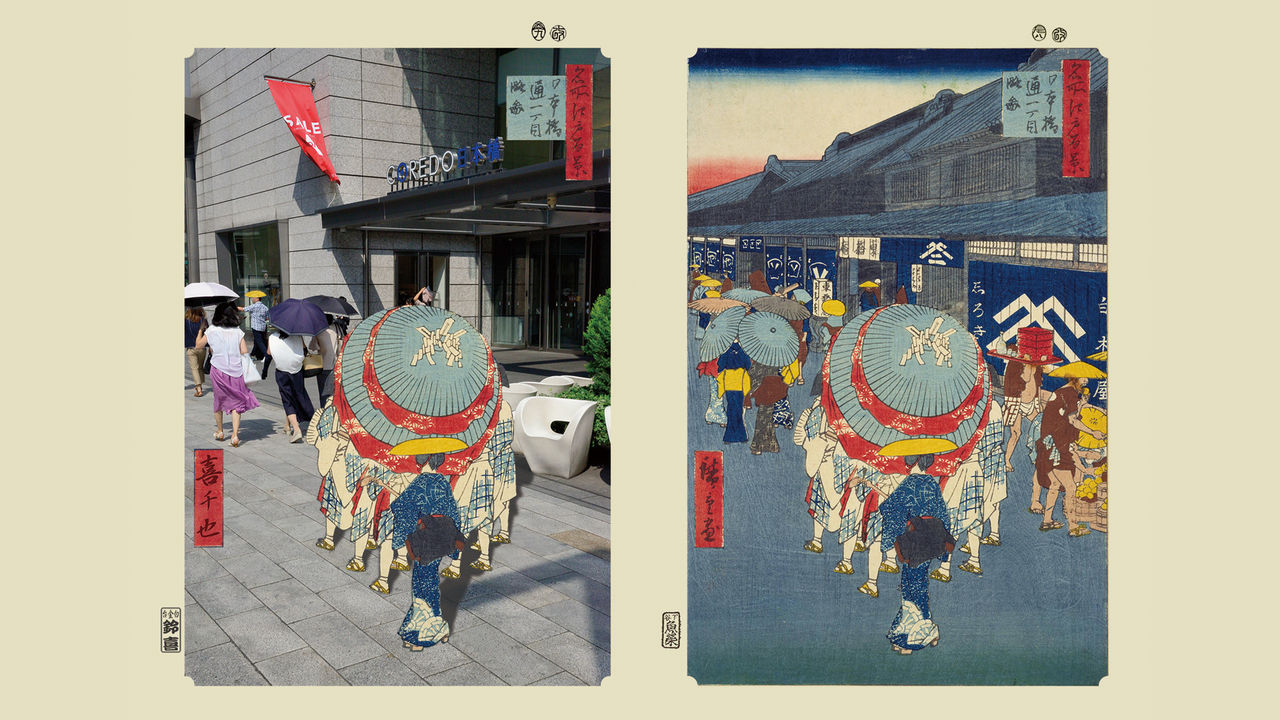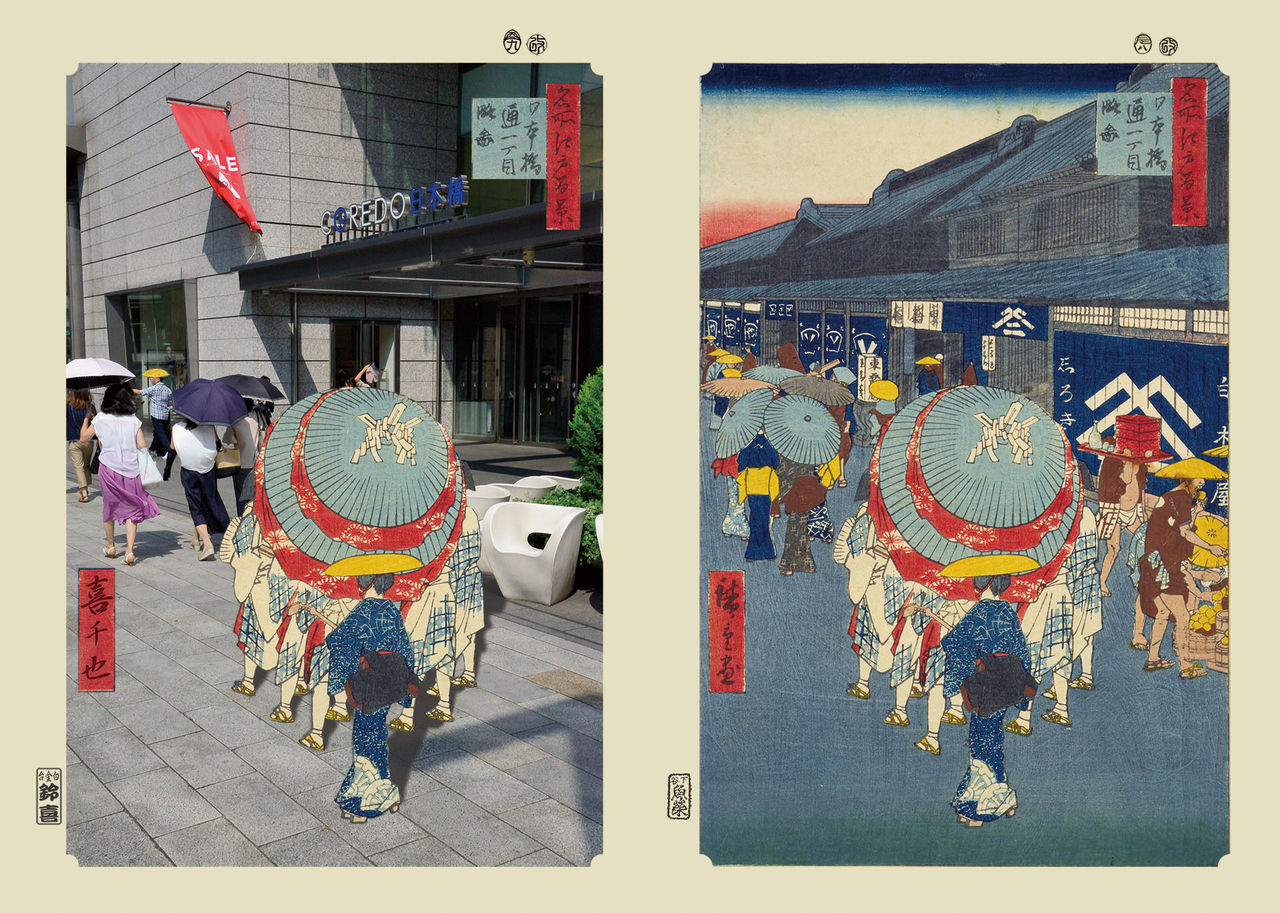
Shopping in Past and Present: “View of Nihonbashi Tōri-itchōme”
Guideto Japan
- English
- 日本語
- 简体字
- 繁體字
- Français
- Español
- العربية
- Русский
One Hundred Famous Views of Edo by Kichiya, the Ukiyo Photographer: Today’s Tokyo Through Hiroshige’s Eyes
Meisho Edo hyakkei, known in the West as One Hundred Famous Views of Edo, was one of ukiyo-e artist Utagawa Hiroshige’s most celebrated works, influencing even Western artists like Van Gogh and Monet. Drawn in Hiroshige’s final years and published from 1856 to 1861, the series depicted the sights of Edo (as Tokyo was then known) through the changing seasons. Audiences around the world admired Hiroshige’s inventive use of bold compositions, bird’s-eye-view perspectives, and vivid colors. A century and a half later, “ukiyo photographer” Kichiya has set himself the task of recreating each of these views with a photograph taken in the same place, at the same time of year, from the same angle. Join us in this new series at Nippon.com on a tour of these “famous views” in Edo and modern-day Tokyo, guided by Kichiya’s artistry and his knowledge of old maps and life in Edo.
A Lively Summer Scene
In Hiroshige’s time, Nihonbashi Itchōme was home to Shirokiya, one of Edo’s three biggest clothing stores along with Echigoya and Daimaruya. Today, the spot once occupied by Shirokiya is now taken up by Coredo Nihonbashi, a combined office building and shopping center.
This print depicts the bustling foot traffic outside Shirokiya on a hot summer day. The crowd is quite diverse and includes a troupe of Sumiyoshi dancers, a street minstrel playing her shamisen, and a man delivering an order of soba noodles. Presumably these were all evocative of summer at the time, although this is less obvious today.
One interesting thing about Hiroshige’s picture is that not a single face is visible. Everyone is hidden in the shade of a parasol or broad-brimmed sugegasa hat. While taking my photograph in the same location, sizzling in the sun’s rays, I realized that this was actually Hiroshige’s way of showing how hot it was. Most of the women who strolled past during my photo shoot similarly shaded themselves with parasols or hats, while many men sported sunglasses. Just like the original picture, unobscured visages were few and far between, convincing me that even 160 years later the summer heat of Tokyo is just as punishing as ever.
About the Location
Chūō-dōri
Chūō-dōri is the main artery of Tokyo’s city center. It connects Nihonbashi to Kanda, Akihabara, and Ueno in the north and Kyōbashi, Ginza, and Shinbashi to the south. All of the areas along the thoroughfare have flourished since the Edo period as commercial or entertainment districts.
The road itself, though, does not date back to Edo times. The first unbroken connection between Shinbashi and Ueno was a horse-drawn trolley line that opened in 1882. This gradually evolve into modern Chūō-dōri. Today the street has a unique atmosphere, particularly around Nihonbashi where an old sense of Edo sensibility is carefully curated within the modern urban landscape.
tourism Tokyo ukiyo-e One Hundred Famous Views of Edo by Kichiya Kantō Nihonbashi
